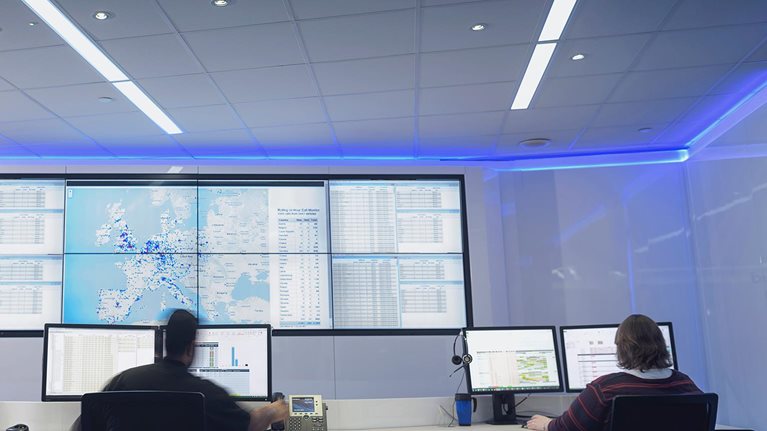The COVID-19 outbreak has forced a sudden shift in how governments around the world function by presenting them with an unprecedented peacetime challenge. The crisis has significantly added to governments’ responsibilities and workloads: in addition to leading the response and coordinating efforts across the public and private sectors, governments have to, among other urgent tasks, steer economic policy and manage a spike in unemployment claims. Government organizations must balance these competing priorities while accommodating stay-at-home orders and physical distancing for their workforce.
To adapt to the current environment, governments first need to ensure that their employees have the tools to support remote working. The organizations must then implement new approaches to management, collaboration, and culture to create a supportive environment for their workforce. Since the world is unlikely to ever return completely to its pre-pandemic ways, the public sector should seek to rapidly change how it works, including improving its agility and productivity, in lasting ways.
Basic tools for remote working
While some people in government functions, including first responders, cannot work remotely, others can more easily make the transition. Government organizations have invested in technology and systems to enable a minority of their employees to work from home. In response to the pandemic, many government leaders now need to ramp up the capacity, to support their entire departments, by doing the following:
- Set up an infrastructure for communications, such as conference calls and videoconferencing, and ensure that all users know how to access it
- Agree on a file-sharing method for remote working that includes version control and accounts for relevant security concerns (using, for example, a government-approved file-sharing service and email system)
- Establish a help line consisting of super users who can help colleagues access the virtual private network and navigate other elements of the basic infrastructure
Governments will need to work closely with their procurement and IT functions to quickly identify their needs and set priorities.
Virtual work and collaboration
Now that governments’ workforces have been suddenly dispersed and must interact online or by phone, the organizations must ensure they have ground rules for how to engage in place. A focus on three areas can help organizations establish the structure, processes, and culture needed to succeed.
1. Divide teams into effective remote units
Traditionally, many government organizations have had somewhat siloed structures and, to gain buy-in, have included large numbers of people in meetings and review processes. Such approaches are less effective when attempting to accelerate the pace of decision making and when teams are virtual. For remote working, governments must implement a new team structure, one that is smaller and cross-functional (Exhibit 1). Each team should have all of the areas of competence and expertise that are necessary to complete its tasks. A clear hierarchy and decision-making authority support discussion within teams and collaboration among team leads.1

In addition to being more discerning about who attends meetings, team leads now need to adopt a more formal approach to meetings, including sending out agendas in advance.
Shifting from in-person collaboration and problem solving to remote engagement requires leaders to embrace new ways of working to ensure that remote teams are pursuing common goals. Department heads should keep their employees engaged and accelerate the pace of action. In addition, they should communicate with remote teams frequently, to understand roadblocks and monitor progress, proactively offer assistance, and participate in problem solving when it would be valuable. By managing the interdependencies of each work stream, the most effective leaders ensure that the right teams are connected and can solve problems together.
2. Shift to leading teams based on weekly outputs and goals
To accelerate progress and decision making, teams should adopt tools from agile ways of working. For example, more regular and frequent meetings, well-defined goals, and a digital team room or dashboard for tracking progress can ensure that the entire team is aligned on next steps and timelines. A virtual schedule should always be visible and accessible to all team members. For frequency, we suggest using recurring and planned touchpoints multiple times a day (Exhibit 2). These check-ins can be short—about 15 minutes each—and include a morning kickoff, a midday meeting, and an end-of-the-day checkout. To complement this cadence, team members should reserve regular time slots that allow for virtual collaboration with one another.

Leaders also need to establish processes for solving different types of problems. Top-priority issues, for example, might require fast-track approval and a process for escalating them. In addition, cross-department collaboration must be supported by clear guidelines for how team members reach out for help, to avoid multiple parties sending the same request.
3. Implement best practices for effective team performance
Many government organizations reinforce culture—values, rules, norms, and structure—through interactions at the office, with leaders setting the tone. The shift to remote working requires organizations to make a sustained investment in culture in several ways. First, leaders must make culture a high priority and establish team norms that provide the underpinnings of a healthy team culture. Second, employees must address how they can still feel like a team without interacting face-to-face at the office. They might, for example, carve out time in recurring meetings for social interactions and encourage their colleagues to connect with each other outside of business tasks.
The structure and processes that work so naturally in an office need to be replaced with new guidelines and expectations. To reach team agreement on its working hours and meeting times and frequency, leaders might explicitly ask team members about their obligations and preferred schedules. Teams must also agree on their collaboration and communication tools and on how to receive and provide feedback. From a process standpoint, each team should appoint a meeting “owner” to help focus the team members’ interaction and lay out a path for escalating issues when necessary.
High-functioning governments are essential to helping the private sector, and society as a whole, weather the current crisis. The agile practices described here can help government organizations quickly adjust to remote working as well as set them up to accelerate their decision making and increase their collaboration now as well as over the longer term.

